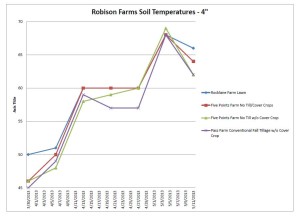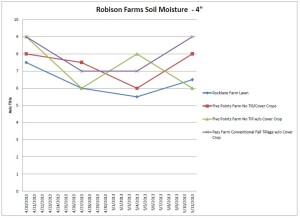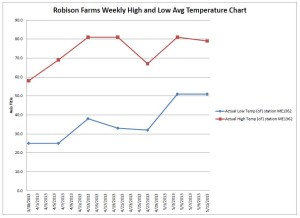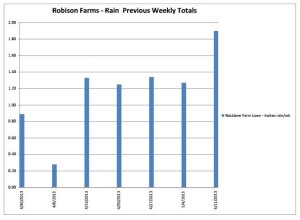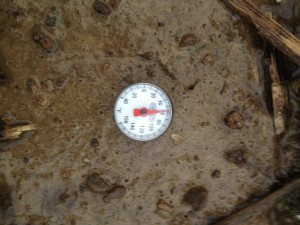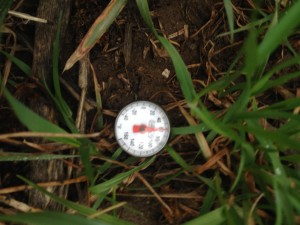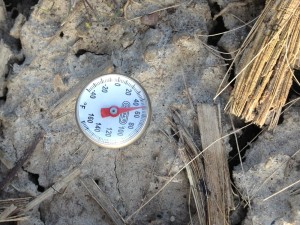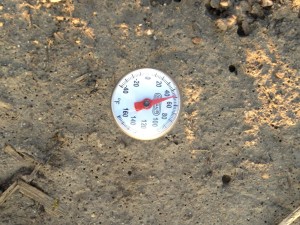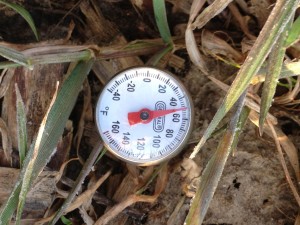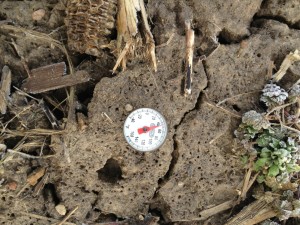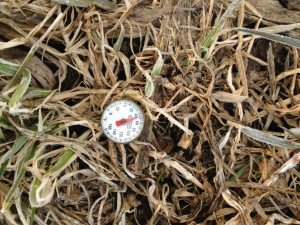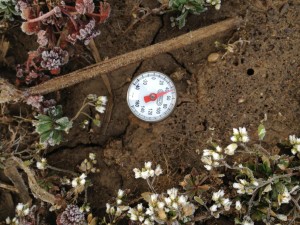Sometimes apparent myths prove to be true and sometimes they prove to be…myths!
In March 2013 I asked my brother Don Robison from Robison Farms to help me figure out how cover crops might effect soil temperatures. We have looked at data in previous posts trying to answer the question “Do Cover Crops that Survive the Winter Keep the Soil Colder in the Spring than Fall-Tilled Soil?”
Now I have asked Don to chart all of his data that he has taken since late March in fall-tilled soil, no-till soil, no-till soil with cover crop annual ryegrass, and a lawn. Don added a test of taking moisture readings as well because “we know” that no-till soils are “always wetter and colder than fall-tilled soils.” At least that is common “knowledge” from many farmers I talk to from Minnesota to Missouri and points eastward.
Don made some comments that I believe are helpful:
- The soil type in the lawn is Miami silt loam, while the fields are Crosby silt loam.
- The no-till w/o cover crop test had a compaction layer at ~3-9″ deep in this area in our compaction tests we conducted in 2012. Don’s thought is that where he is doing the tests had a compaction layer closer to the 3″ depth (so there is less percolation).
- Don reports “No conclusions yet and maybe there won’t be any, but an interesting trend I’m starting to see is that in this cool wet spring, the conventional tillage does not seem to be living up the reputation of being warmer and easier to till in the spring than no till. That may very well change when the rainfall and temperatures become more like you would expect to see in the planting season.”
Data reveals that cover crops do not appear to be keeping the soil colder.
It appears that our no-till soils with cover crops has consistently been warmer or just as warm as the fall-tilled soils. I am placing the charts below for you to observe the data.
